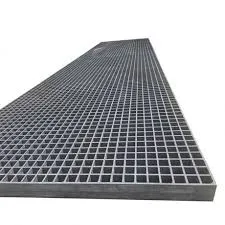
-
 Afrikaans
Afrikaans -
 Albanian
Albanian -
 Amharic
Amharic -
 Arabic
Arabic -
 Armenian
Armenian -
 Azerbaijani
Azerbaijani -
 Basque
Basque -
 Belarusian
Belarusian -
 Bengali
Bengali -
 Bosnian
Bosnian -
 Bulgarian
Bulgarian -
 Catalan
Catalan -
 Cebuano
Cebuano -
 China
China -
 China (Taiwan)
China (Taiwan) -
 Corsican
Corsican -
 Croatian
Croatian -
 Czech
Czech -
 Danish
Danish -
 Dutch
Dutch -
 English
English -
 Esperanto
Esperanto -
 Estonian
Estonian -
 Finnish
Finnish -
 French
French -
 Frisian
Frisian -
 Galician
Galician -
 Georgian
Georgian -
 German
German -
 Greek
Greek -
 Gujarati
Gujarati -
 Haitian Creole
Haitian Creole -
 hausa
hausa -
 hawaiian
hawaiian -
 Hebrew
Hebrew -
 Hindi
Hindi -
 Miao
Miao -
 Hungarian
Hungarian -
 Icelandic
Icelandic -
 igbo
igbo -
 Indonesian
Indonesian -
 irish
irish -
 Italian
Italian -
 Japanese
Japanese -
 Javanese
Javanese -
 Kannada
Kannada -
 kazakh
kazakh -
 Khmer
Khmer -
 Rwandese
Rwandese -
 Korean
Korean -
 Kurdish
Kurdish -
 Kyrgyz
Kyrgyz -
 Lao
Lao -
 Latin
Latin -
 Latvian
Latvian -
 Lithuanian
Lithuanian -
 Luxembourgish
Luxembourgish -
 Macedonian
Macedonian -
 Malgashi
Malgashi -
 Malay
Malay -
 Malayalam
Malayalam -
 Maltese
Maltese -
 Maori
Maori -
 Marathi
Marathi -
 Mongolian
Mongolian -
 Myanmar
Myanmar -
 Nepali
Nepali -
 Norwegian
Norwegian -
 Norwegian
Norwegian -
 Occitan
Occitan -
 Pashto
Pashto -
 Persian
Persian -
 Polish
Polish -
 Portuguese
Portuguese -
 Punjabi
Punjabi -
 Romanian
Romanian -
 Russian
Russian -
 Samoan
Samoan -
 Scottish Gaelic
Scottish Gaelic -
 Serbian
Serbian -
 Sesotho
Sesotho -
 Shona
Shona -
 Sindhi
Sindhi -
 Sinhala
Sinhala -
 Slovak
Slovak -
 Slovenian
Slovenian -
 Somali
Somali -
 Spanish
Spanish -
 Sundanese
Sundanese -
 Swahili
Swahili -
 Swedish
Swedish -
 Tagalog
Tagalog -
 Tajik
Tajik -
 Tamil
Tamil -
 Tatar
Tatar -
 Telugu
Telugu -
 Thai
Thai -
 Turkish
Turkish -
 Turkmen
Turkmen -
 Ukrainian
Ukrainian -
 Urdu
Urdu -
 Uighur
Uighur -
 Uzbek
Uzbek -
 Vietnamese
Vietnamese -
 Welsh
Welsh -
 Bantu
Bantu -
 Yiddish
Yiddish -
 Yoruba
Yoruba -
 Zulu
Zulu
High Temperature Fiberglass Solutions for Industrial Applications and Advanced Manufacturing
The Role of Fiberglass Products in High-Temperature Applications
Fiberglass products have increasingly gained recognition across various industries for their exceptional thermal resistance and mechanical properties. As industries continually seek materials capable of withstanding high temperatures while maintaining performance, fiberglass emerges as a viable and efficient solution. This article explores the key attributes of fiberglass in high-temperature applications, its composition, typical products, and its advantages over traditional materials.
Understanding Fiberglass
Fiberglass, or glass-reinforced plastic (GRP), is a composite material made from a polymer matrix reinforced by fine glass fibers. The composition of fiberglass can vary, but it generally consists of silica-based glass fibers and a polymer resin, such as epoxy or polyester. This combination creates a lightweight material that displays significant strength, durability, and resistance to environmental degradation.
High-Temperature Capabilities
One of the flagship properties of fiberglass is its ability to withstand extreme temperatures. Depending on the specific formulation used, fiberglass can handle operational temperatures of up to 1,000 degrees Fahrenheit (about 538 degrees Celsius) without compromising structural integrity. This makes it an ideal choice for a range of high-temperature applications, including aerospace, automotive, industrial insulation, and electrical components.
Typical Fiberglass Products for High-Temperature Applications
1. Insulation Materials Fiberglass is widely used in insulation products, such as blankets and boards, designed for high-temperature environments. These materials are crucial in industries like petrochemical and oil refining, where maintaining temperature is essential for efficient operations.
2. High-Temperature Fabrics Specialized fiberglass fabrics can be employed in protective clothing and coverings. These fabrics provide thermal protection for workers in high-heat environments, ensuring safety while maintaining mobility.
fiberglass products for high temperature

3. Reinforced Pipe and Tank Linings Fiberglass-reinforced plastics are often utilized in piping and tank linings for transporting high-temperature liquids and gases. The corrosion resistance of fiberglass enhances the longevity and reliability of these systems, making them a popular choice in chemical processing.
4. Electrical Components Due to its excellent insulative properties, fiberglass is commonly used in the production of electrical housings, circuit boards, and other components that require thermal and electrical resistance, particularly in high-voltage applications.
Advantages of Fiberglass over Traditional Materials
Fiberglass stands out against traditional materials like metal and ceramics in several key areas. First and foremost, its lightweight nature offers significant advantages in applications where weight and maneuverability are important. This is particularly evident in the aerospace and automotive sectors, where minimizing weight can lead to fuel efficiency.
Additionally, fiberglass displays exceptional corrosion resistance compared to metals that are susceptible to rust and degradation in harsh environments. This characteristic not only enhances the lifespan of fiberglass products but also minimizes maintenance costs.
Moreover, fiberglass can be manufactured to meet specific needs in terms of strength and flexibility. Engineers can tailor the orientation, type, and volume of glass fibers used in the composite, allowing for customization based on the demands of a particular application. This flexibility is not typically available with traditional materials.
Conclusion
As industries continue to evolve and seek innovative solutions for high-temperature challenges, fiberglass products are set to play a pivotal role. Their exceptional thermal resistance, lightweight properties, and versatility offer numerous advantages over traditional materials. From insulation applications to electrical components, fiberglass not only meets high-performance standards but also contributes to improving safety and efficiency in various industrial processes.
As technology advances and new formulations of fiberglass are developed, it is likely that the role of fiberglass in high-temperature applications will continue to expand, paving the way for even more innovative solutions and applications in the future.









